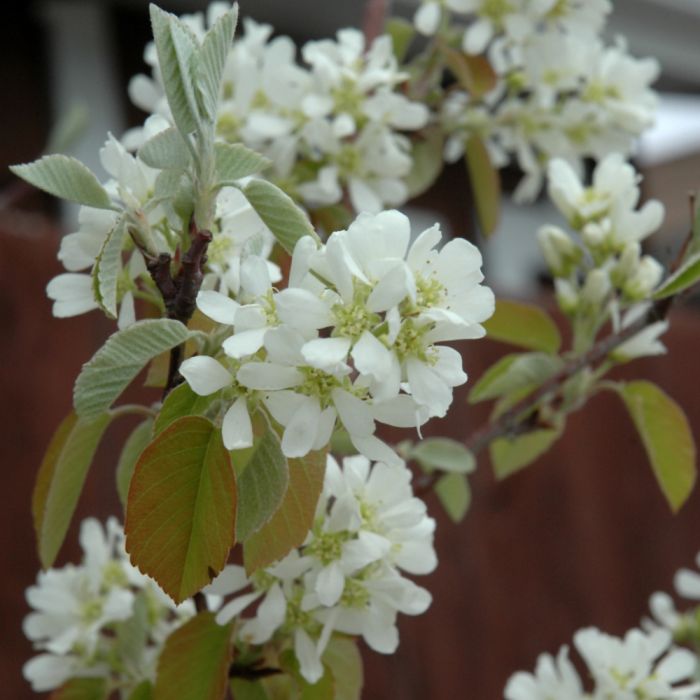Amelanchier, Serviceberry Shrub 'First Editions® Standing Ovation™'




- Sun Preference
- Full-Sun, Part-Sun
- Bloom Time
- April, May, June
Description
Dark green, almost circular leaves change to red and orange in autumn. Stems are covered in white flowers in spring. Narrow, upright form is perfect for screening.
Minnesota's Largest Selection of Shrubs
Elevate your landscaping with Gertens' unmatched variety of shrubs! Selecting the right shrubs for your backyard can enhance its beauty and functionality. Consider factors like sunlight, soil type, and mature size when choosing shrubs. For sunny areas, flowering shrubs like roses or hydrangeas can add color and charm. In shady spots, opt for shrubs like azaleas or hostas. Evergreen shrubs provide year-round interest and privacy, while deciduous shrubs offer seasonal color changes. At Gertens, we offer a wide selection of shrubs to suit every backyard need.
Details
First Editions® Standing Ovation™ Serviceberry | Amelanchier alnifolia 'Obelisk'
Height: 15 feet
Spread: 3 feet
Sunlight: Full Sun to Partial Sun
Hardiness Zone: 2b
Other Names: Juneberry, Saskatoon Berry
Brand: Gertens
Description:
With a rigidly upright and slender habit, this shrub also qualifies as a small tree, possibly reaching 15 feet; branches are smothered with pretty white flowers in early spring; makes a great accent in the garden
Ornamental Features
First Editions® Standing Ovation™ Serviceberry is primarily grown for its highly ornamental fruit. It features an abundance of magnificent deep purple berries in late spring. It is draped in stunning clusters of white flowers rising above the foliage from early to mid spring before the leaves. It has forest green deciduous foliage which emerges red in spring. The oval leaves turn an outstanding yellow in the fall.
Landscape Attributes
First Editions® Standing Ovation™ Serviceberry is a multi-stemmed deciduous shrub with a narrowly upright and columnar growth habit. Its relatively fine texture sets it apart from other landscape plants with less refined foliage.
This is a relatively low maintenance shrub, and is best pruned in late winter once the threat of extreme cold has passed. It is a good choice for attracting birds to your yard, but is not particularly attractive to deer who tend to leave it alone in favor of tastier treats. It has no significant negative characteristics.
First Editions® Standing Ovation™ Serviceberry is recommended for the following landscape applications;
- Hedges/Screening
- General Garden Use
- Naturalizing And Woodland Gardens
Planting & Growing
First Editions® Standing Ovation™ Serviceberry will grow to be about 15 feet tall at maturity, with a spread of 3 feet. It tends to be a little leggy, with a typical clearance of 2 feet from the ground, and is suitable for planting under power lines. It grows at a medium rate, and under ideal conditions can be expected to live for approximately 30 years. This is a self-pollinating variety, so it doesn't require a second plant nearby to set fruit.
This shrub does best in full sun to partial shade. It prefers to grow in average to moist conditions, and shouldn't be allowed to dry out. It is not particular as to soil type or pH. It is somewhat tolerant of urban pollution. This is a selection of a native North American species.
More Information
| Gerten Grown Plants | Gerten Grown Plants |
|---|---|
| Available for Pre-Order | Yes |
| Bloom Time | April, May, June |
| Sun Preference | Full-Sun, Part-Sun |
| Mature Height (Range) | 10 - 15 feet |
| USDA Hardiness Zone | 2, 3, 4, 5, 6, 7, 8 |
| Common Family Name | Serviceberry |


